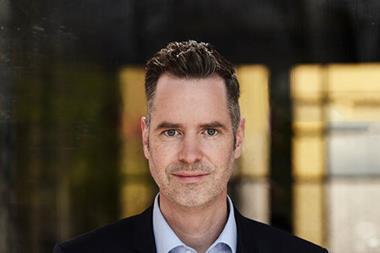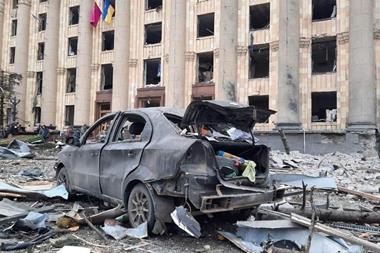Within the last 18 months the landscape of institutional asset management in Germany has experienced the most dramatic change since the inception of the Spezialfonds in 1968.
The concept of segment funds and master KAGs emerged and the success of these new structures has been huge, but understandable: Non German asset management firms can now compete on an equal basis with their domestic counterparts without the need to set up their own KAGs in Germany, and the institutional investor community enjoys a flexibility and transparency unknown so far.
So what happened? In a nutshell the traditional, very specific value chain of doing institutional asset management in Germany collapsed.
In order to appreciate the full impact of these structural changes, it is important to start by briefly reviewing the classical set up in Germany and to understand the main regulatory issues which have triggered the development.
Domestic banks set up KAGs, acted as the depository bank to the funds and, on top, as trading counterpart for the funds as well. In comparison to international standards this scenario was accompanied by low nominal asset management fees and high (and mostly hidden) transaction costs, resulting in cross subsidies within the bank. In addition the structure was protected by the then German regulator (BAKred) as it defined core activities of KAGs to be portfolio management, trade execution, middle office and back office and determined that these core activities have to be performed in total within the KAG by personnel of the KAG, so that for all of these activities outsourcing was not permissible.
As a consequence, foreign managers had two possibilities to enter the German market. First, set up their own KAG and transfer the portfolio management know-how (which typically existed in London, New York or any other places) via cumbersome ‘echo–systems’ into their German operations, which included pre-trade approval of each investment suggestion and separate order execution initiated by the KAG. Second, contract with a German KAG – their principal competitors – to advise them (again implemented via echo systems) with the consequence that the German competitor has seen all ideas, concepts and transactions ( specifically for US houses, this represented a major problem).
In late 2001 the German regulators (obviously also under the pressure of the relevant European regulations) changed its actual practise as far as outsourcing is concerned. The concept of core activities was dropped and on a case by case basis approval is now given even for a full outsourcing of the portfolio management function. As a consequence a market for segment funds and master KAGs emerged almost immediately. Though there has been the special case of the Universal KAG, which has offered de facto funds on a segemented basis since the early 1990s.
So what is a master KAG ? Basically, it could be defined as a full fledged KAG structure, with portfolio management and trading completely outsourced. The master KAG positions itself either as a consolidator to institutional client (segment or master fund concept), as a legal platform to (mainly) international managers without own KAG (rent a KAG concept), or as both. To make things even more complex, the majority of KAGs which position themselves as master KAGs, continue to also offer own portfolio management services (I will not discuss the embedded potential conflicts of interest of such a positioning).
A segment (or master) fund is a normal Spezialfonds with additional features: the fund is divided in clearly defined segments; each segment may have either a different benchmark and/or a different manager; rules and regulations apply for the overall fund, since for legal and accounting purposes the segments are not recognised.
What does this structure deliver to the German institutional investor? We need to review this question in detail in order to understand the significance of this development - and the potential threat it also represents to a lot of KAGs in the German market place
German institutional investors very often have a (sometimes) considerable number of Spezialfonds with a number of different KAGs. Now these many Spezialfonds may be consolidated into one or two large segment fund administrated by one master KAG.
The advantages for the investor are attractive as there are:
a) One legal entity only to deal with, one contract and one audit.
b) Standardisation of fund accounting, controlling and reporting.
c) Consolidated reporting for all assets and performance.
d) The flexibility to use various managers to manage different segments, having differentiation by asset classes, foreign managers without their own KAG, flexibility to change manager much more quickly and easily.
e) Cost reduction from volume.
f) Higher cost transparency, showing split of costs for alpha production, for trading and operations.
g) Lower depreciation risks, as different risks profiles of different segments may reduce the risk of the overall fund.
h) Less administrative efforts – sharply reduced number of review regular meetings.
It does not need a rocket scientist to work out that institutional investors find all of this quite attractive. The success of the concept, therefore, is not really surprising.
Let us review what this means for non German assets managers, and it does mean a lot: Since the mid-1990s foreign managers tried to gain unrestricted access to the German market, but various initiatives, including some discussions with the EC in Brussels, did not really change anything. But now for the first time ever, foreign managers can compete on a level playing field.
With the traditional value chain breaking apart, foreign asset managers can now compete on their core competencies, ie, production of alpha – by managing a specific segment within a master structure - instead of being forced to build and run a highly regulated German operational plat form called KAG. For foreign asset management firms, the master fund/segment fund structure finally provides full access to the German asset management market, both institutional and retail.
The development described above will eventually change the structure of the German KAG landscape. With the growing competition of foreign managers and the increased trend of investors to consolidate their Spezialfonds into master KAG’s every KAG has to re-position itself in the market by defining its real core competencies and sustainable competitive advantages.
In my expectation the future landscape will include three type of KAG’s: those offering the whole value chain; pure master KAGs and those offering mixed services. In addition the global custodians may also enter the picture by taking over more and more of the administrative functions of a KAG. In any event, Germany will experience a dramatic market consolidation, and it would certainly not be surprising to see half of the current 80 plus KAG’s disappearing.
Günther Skrzypek is managing director of GAMA in Frankfurt












No comments yet